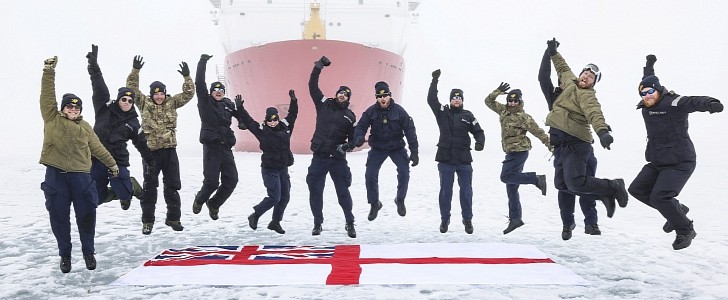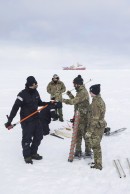There are several achievements that can make Royal Navy sailors jump for joy, and one of them is getting closer to the North Pole than any other Royal Navy ship has ever gotten in history.
It may not be as famous as the aircraft carriers and frigates, but HMS Protector has already broken an impressive record, even though it’s currently going through an intensive training period. The Royal Navy’s only icebreaker has made its way 80°41.5 North in the Greenland Sea, which is closer to the North Pole than any other UK military ship has ever gotten.
The only ones who can reach even further than this are submarines, like HMS Trenchant, who made an impressive trip in 2018.
It’s a great achievement for HMS Protector, considering that it’s been on a break, far away from ice, for more than 2 years. But now it’s getting ready for its deployment to Antarctica, which will begin towards the end of this year. In order to be fully prepared for that, the ship is currently going through a series of trials, including testing the strength of it engine and trials at various depths and types of ice.
And it’s not any easier for the on board crew either. They’ve had to adapt to the sudden temperature change, after departing from Devonport, and prove that they can perform their duties even in extreme weather conditions.
As a survey and research ship, the Protector didn’t just conduct tests, but also collected data regarding North Atlantic currents and marine mammals. The survey was done 2,000 to 3,000 meters (6,560 to 9,840 feet) deep in the Fram Strait, and will provide important information for scientists at the British Antarctic Survey.
After this historical trip to the North Pole, Royal Navy’s icebreaker is heading to Iceland, after which it will return to Plymouth, with only a few months left before its official deployment to the southern polar region.
The only ones who can reach even further than this are submarines, like HMS Trenchant, who made an impressive trip in 2018.
It’s a great achievement for HMS Protector, considering that it’s been on a break, far away from ice, for more than 2 years. But now it’s getting ready for its deployment to Antarctica, which will begin towards the end of this year. In order to be fully prepared for that, the ship is currently going through a series of trials, including testing the strength of it engine and trials at various depths and types of ice.
And it’s not any easier for the on board crew either. They’ve had to adapt to the sudden temperature change, after departing from Devonport, and prove that they can perform their duties even in extreme weather conditions.
As a survey and research ship, the Protector didn’t just conduct tests, but also collected data regarding North Atlantic currents and marine mammals. The survey was done 2,000 to 3,000 meters (6,560 to 9,840 feet) deep in the Fram Strait, and will provide important information for scientists at the British Antarctic Survey.
After this historical trip to the North Pole, Royal Navy’s icebreaker is heading to Iceland, after which it will return to Plymouth, with only a few months left before its official deployment to the southern polar region.







